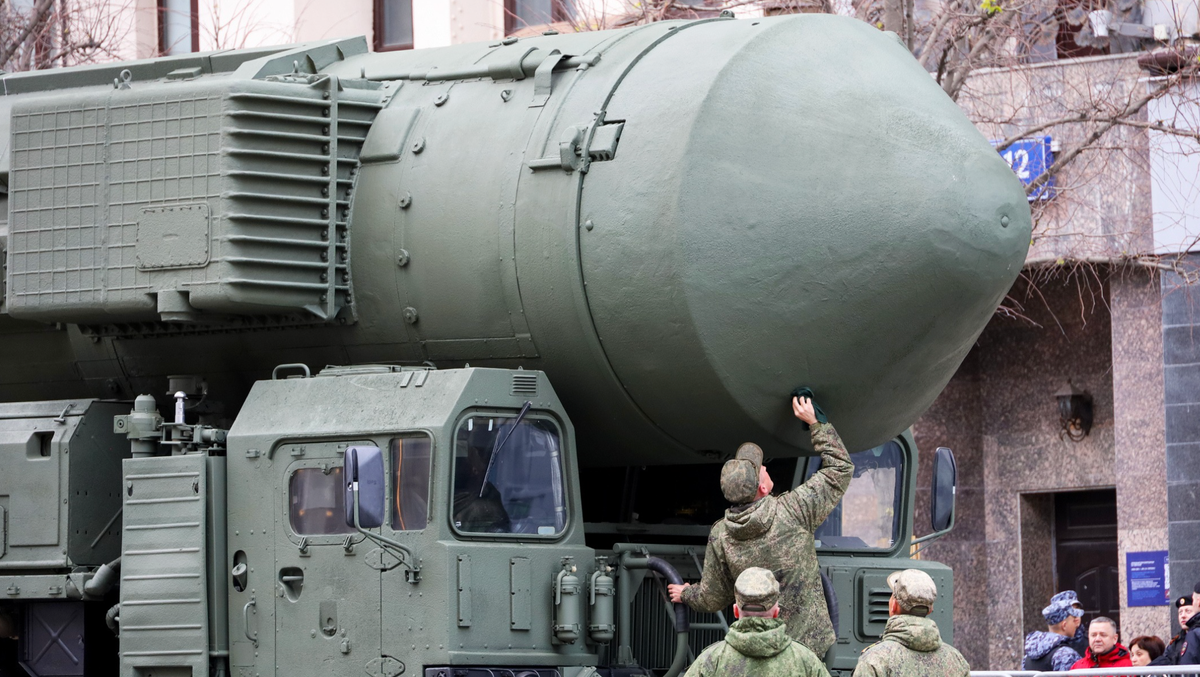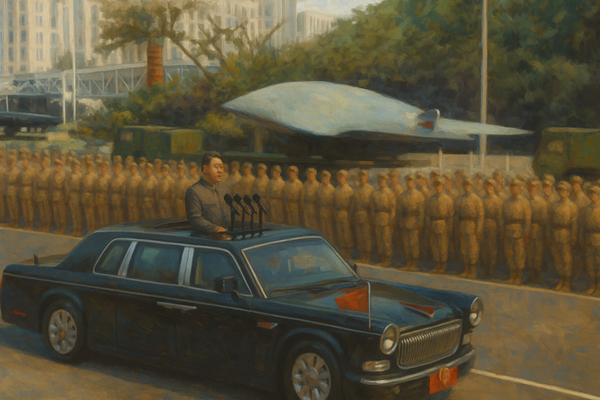🇷🇺 Russia's Nuclear Strategy

Russia’s nuclear strategy has evolved over the past half-century, shaped by shifting geopolitical dynamics, internal military reforms, and advancements in nuclear technology. Rooted in both deterrence and a pursuit of strategic parity—initially with the United States and later with NATO—Russia’s doctrine emphasizes a robust nuclear triad (land-based missiles, submarine-launched missiles, and strategic bombers), modernization of delivery systems, and flexible options for potential nuclear use. Under President Vladimir Putin, Russia has underscored the centrality of nuclear weapons to its national security, with official documents highlighting the right to employ such capabilities to protect the nation’s “sovereignty and territorial integrity” if threatened.
Overview
Russia views its nuclear arsenal as essential for deterring large-scale aggression and sustaining its global standing, fielding one of the most expansive strategic forces and investing in cutting-edge systems such as hypersonic glide vehicles. Western analysts often attribute to Russia a doctrine of limited nuclear use—sometimes called “escalate to de-escalate”—to compel an adversary to back down in regional conflicts, though Moscow officially denies an offensive stance. At the same time, Russia affirms its readiness to use nuclear weapons if its core national interests are threatened and continues to modernize its triad of ICBMs, SLBMs, and strategic bombers, as well as developing novel weapons designed to circumvent missile defenses.
Deterrence and Strategic Parity
Russia maintains that its nuclear arsenal is integral to deterring large-scale aggression and preserving its global status. The country fields one of the world’s most expansive strategic arsenals and invests in next-generation systems such as hypersonic glide vehicles. Source: Russian Ministry of Foreign Affairs – Military Doctrine (en.kremlin.ru)
Limited Nuclear Use and “Escalate to De-escalate” Concept
While official statements vary, numerous Western analysts interpret Russia’s doctrine to include the possibility of limited nuclear use to force an adversary to back down in a regional conflict. Moscow denies an “offensive” nuclear stance, but asserts its readiness to defend vital interests with nuclear arms if deemed necessary. Source: Carnegie Endowment for International Peace – Russia’s Nuclear Strategy
Modernization and Technological Advancements
Russia consistently upgrades its strategic forces, including intercontinental ballistic missiles (ICBMs), submarine-launched ballistic missiles (SLBMs), and strategic bombers, as well as developing novel weapons systems to circumvent missile defenses. Source: Federation of American Scientists – Russian Nuclear Forces
Timeline of Major Developments
2020s
2023 / Russia Suspends Participation in New START
President Putin announces the suspension of Moscow’s participation in the New Strategic Arms Reduction Treaty (New START), citing concerns over Western support to Ukraine and alleged U.S. hostility. This move raises worries about the future of bilateral arms control between the world’s two largest nuclear powers.
Source: Arms Control Association: “Russia Suspends New START” (March 2023)
2022 / Escalation Amid Ukraine Conflict
Following Russia’s invasion of Ukraine, Putin publicly raises the alert status of Russia’s nuclear deterrent forces, signaling possible nuclear use if he perceives direct Western military intervention. Western leaders denounce these statements as dangerous nuclear sabre-rattling. Source: BBC News: “Putin Puts Nuclear Deterrent on High Alert” (27 February 2022)
2021 – Extension of New START
Despite strained U.S.-Russia relations, both sides agree to extend the New START arms control treaty for five years, preserving key verification measures and limiting deployed strategic nuclear warheads. Source: U.S. Department of State: “The United States Extends New START Treaty with the Russian Federation for Five Years” (3 February 2021)
2020 – Publication of New Nuclear Deterrence Policy
Russia issues its “Basic Principles of State Policy of the Russian Federation on Nuclear Deterrence,” clarifying conditions for potential nuclear use, including situations that threaten national survival or target critical infrastructure. Source: Official Kremlin Document (English) (2020)
2010s
2018 / Unveiling of “Invincible” Weapons
In a high-profile address, President Putin announces advanced nuclear-capable systems—such as the Sarmat ICBM and the hypersonic Avangard glide vehicle—designed to penetrate any existing missile defenses. Source: BBC News: “Putin Claims New ‘Invincible’ Missile” (1 March 2018)
2014 / Annexation of Crimea and Nuclear Rhetoric
Russia’s annexation of Crimea leads to increased tensions with NATO. Russian officials signal a willingness to defend perceived Russian territory, including Crimea, with nuclear means if necessary. Source: Arms Control Association: “Russia Issues Nuclear Threats” (June 2014)
2010 / New START Treaty Signed
Russia and the United States sign the New START treaty, committing to limits on strategic nuclear delivery vehicles and warheads while maintaining strict verification procedures. Source: U.S. Department of State: “New START” (2010)
2000s
2009 / New National Security Strategy
Russia’s updated National Security Strategy highlights the modernization of the nuclear arsenal and the importance of nuclear deterrence in ensuring the country’s strategic independence and geopolitical influence. Source: Carnegie Endowment: “Russia’s New National Security Strategy” (2009)
2002 / U.S. Withdrawal from ABM Treaty and Russian Response
The United States exits the Anti-Ballistic Missile (ABM) Treaty, spurring Russia to accelerate development of new missile systems capable of evading or overwhelming missile defenses. Source: Arms Control Association: “The Anti-Ballistic Missile (ABM) Treaty at a Glance”
1990s
1996 / Russia Signs the CTBT
Russia signs the Comprehensive Nuclear-Test-Ban Treaty, reaffirming its moratorium on nuclear test explosions and committing to support the global nonproliferation regime. Source: CTBTO: “Status of Signature and Ratification”
1991 / Collapse of the Soviet Union and Start of Arms Reductions
With the USSR’s dissolution, Russia inherits the largest share of Soviet nuclear forces. The new Russian government cooperates with the United States on arms reduction initiatives, including the Strategic Arms Reduction Treaty (START I). Source: U.S. Office of the Historian: “START I”
1980s
1987 – INF Treaty
The Soviet Union and the United States sign the Intermediate-Range Nuclear Forces (INF) Treaty, eliminating an entire class of nuclear-armed missiles. This pact significantly reduces tensions in Europe during the latter stages of the Cold War. Source: Arms Control Association: “The Intermediate-Range Nuclear Forces (INF) Treaty at a Glance”
1970s
1979 – SALT II Negotiations
Although signed by the United States and the Soviet Union, the SALT II Treaty never entered into force due to deteriorating bilateral relations. Nonetheless, both sides largely observed its provisions on limiting nuclear delivery systems. Source: Arms Control Association: “SALT II Treaty at a Glance”
1972 / SALT I and ABM Treaty
The USSR and the United States conclude the first Strategic Arms Limitation Talks (SALT I), accompanied by the ABM Treaty. These milestone agreements impose temporary caps on intercontinental ballistic missile launchers and limit anti-ballistic missile systems, setting a foundation for future arms control efforts. Source: U.S. Department of State: “SALT I” (Office of the Historian)




